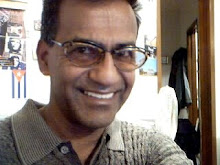It's official now. At the primary healthcare level, there is no difference in the performance of MBBS doctors with five-and-a-half years' training and non-physician clinicians with three years' training who have been called "legal quacks" by the Indian Medical Association (IMA).
This has been demonstrated through a study conducted in Chhattisgarh that compared the performance of different types of clinical care providers at the primary care level. Following the controversy over the government's decision to start three-year courses to train clinicians for primary healthcare, especially in rural areas, called the Bachelor of Rural Health Care (BRHC), a study was conducted by the Public Health Foundation of India (PHFI), the National Health Systems Resource Centre (NHSRC) and the State Health Systems Resource Centre in Chhattisgarh comparing MBBS graduates, the three-year trained non-physician clinicians or rural medical assistants (RMAs), ayurveda unani siddha and homeopathy (AYUSH) physicians and paramedical staff (nurses and pharmacists).
According to the Planning Commission, India faces a shortage of six lakh doctors, a shortage felt more acutely in rural areas as two-thirds of all medical personnel are concentrated in urban areas. The health ministry proposed a three-year bachelor of rural medicine and surgery course to cope with the shortage of doctors in rural areas. The IMA strongly objected to this saying it was "a frontal attack on the profession" and a "fraud on hapless villagers".
However, findings from this study suggest that medical officers (MBBS graduates) and RMAs are equally competent to manage conditions commonly seen in primary care settings. AYUSH medical officers are less competent and paramedics the least competent. This was observed for infectious, chronic and maternal health conditions and for a range of patient types — infants, children, adult men and women. These results hold even after controlling for various individual, facility and location characteristics. This relative performance was consistently found in all aspects of out-patient care — history taking, examination, investigation, diagnosis, prescription and home recommendations.
An important implication of this is that, in terms of clinical competence for primary healthcare, clinical care providers with short duration of training appear to be a viable alternative to physicians, concluded the study. It remains to be seen how the government is going to weather the howls of protest from the IMA, a powerful lobby of almost 1.8 lakh MBBS doctors in the country.
Read more: 'Docs, clinicians on a par in villages' - The Times of India http://timesofindia.indiatimes.com/india/Docs-clinicians-on-a-par-in-villages/articleshow/6576626.cms#ixzz19vO4VG1T
skip to main |
skip to sidebar

Total Pageviews
Search This Blog
Feedjit
Followers
Blog Archive
-
▼
2011
(66)
-
▼
January
(6)
- Carbohydrates CARB is not a four letter word: it ...
- Carbohydrates CARB is not a four letter word: it ...
- Not all Cows are Created Equal... Try to find the ...
- Globalization in a Paris Suburb: Daily Shopping
- Pesticides and Cancer Greek Farmers Study
- INDIA 3 year degree graduates in Primary Care as...
-
▼
January
(6)
About Me

- MD Endocrinology MSc Medical Anthropology
- I am a well trained physician (Melbourne, Brisbane, London, Washington Univ; Miami) and a Medical Anthropologist (London and Havana). Well travelled and interested in the welfare of the indigenous peoples of the world